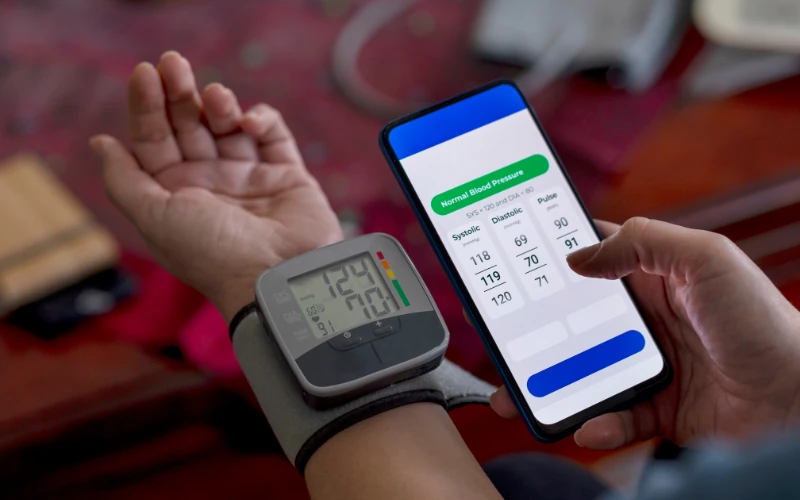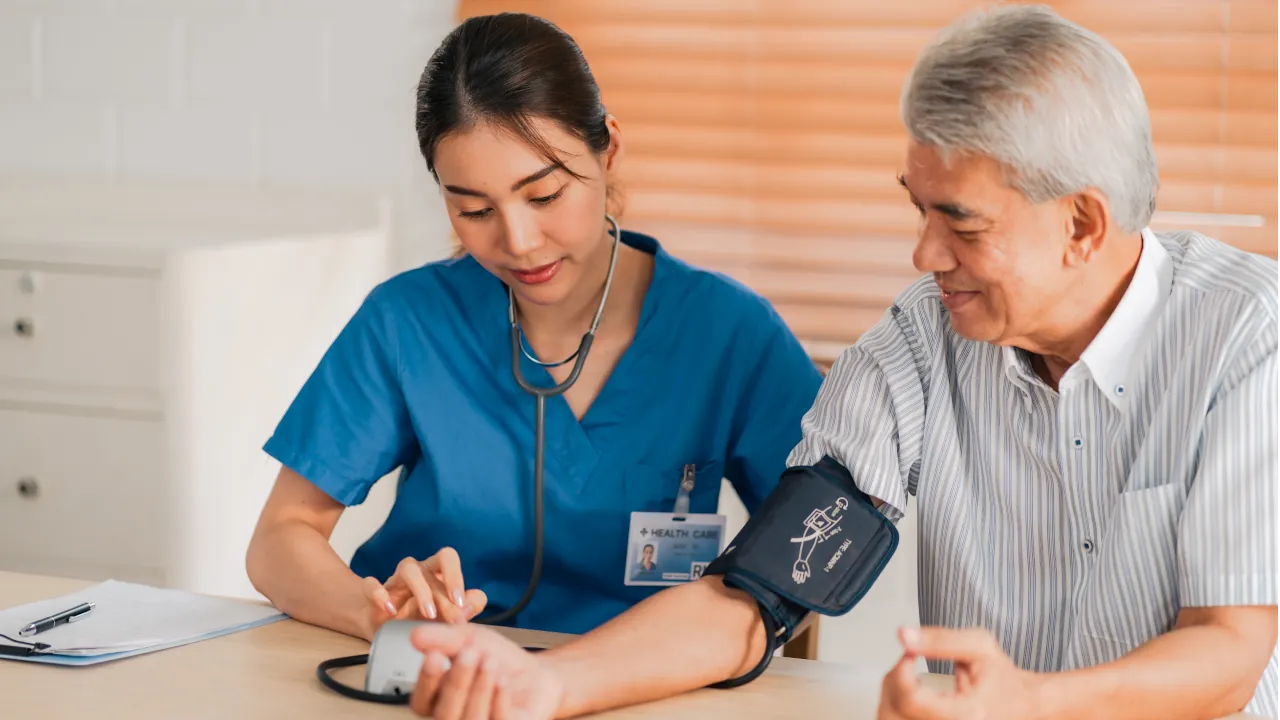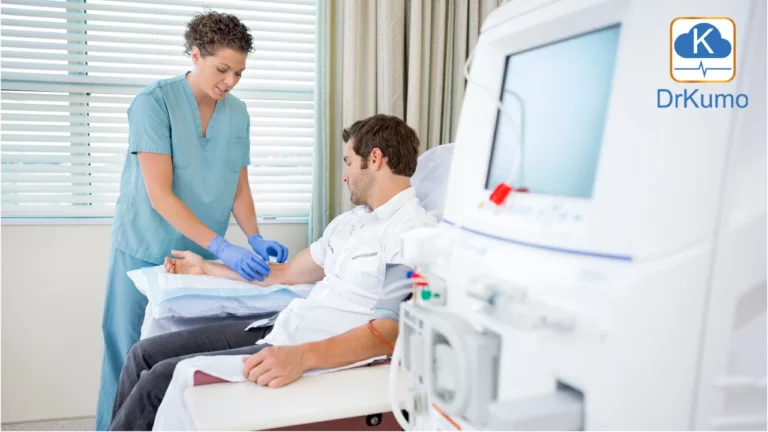Hypertension, often known as high blood pressure, is a silent threat affecting millions worldwide, leading to severe health complications if left unmanaged. Traditionally, monitoring and managing this condition required frequent in-person visits to healthcare providers, posing challenges for both patients and the healthcare system.
However, the advent of Remote Patient Monitoring (RPM) offers a promising solution. RPM utilizes advanced technology to monitor patients’ health data in real-time, providing a continuous connection between patients and healthcare teams. This innovative approach not only enhances the management of hypertension by allowing for timely interventions, but also significantly reduces the barriers associated with traditional care models.
By revolutionizing how we monitor and respond to hypertension, RPM paves the way for a more proactive, personalized, and efficient healthcare delivery system, marking a significant leap forward in our fight against this pervasive health issue.
The Need for a Change in Traditional Care Management
Traditional care for managing hypertension often relies heavily on regular, in-person visits to healthcare facilities. This approach can be cumbersome, requiring patients to travel, take time off work, and navigate the healthcare system’s scheduling constraints. Such logistical challenges not only inconvenience patients but also stretch thin the healthcare system’s resources, impacting its efficiency and responsiveness.

RPM emerges as a transformative solution to these challenges. By leveraging technology, RPM facilitates the continuous monitoring of patients’ blood pressure from their homes. This method significantly reduces the need for frequent in-person visits, making hypertension management more accessible and less disruptive to patients’ daily lives.
Furthermore, RPM enables healthcare providers to promptly address any concerning changes in a patient’s condition, improving the timeliness and effectiveness of care. This shift towards a more flexible, patient-centered approach holds the potential to revolutionize hypertension management by enhancing access, efficiency, and patient outcomes.
What is Remote Patient Monitoring for Hypertension
RPM for hypertension utilizes digital tools and platforms to monitor patients’ blood pressure and other vital signs from the comfort of their homes. These systems comprise wearable devices, blood pressure monitors, and mobile applications that record and transmit health data directly to healthcare providers. This infrastructure enables continuous health monitoring, allowing for immediate adjustments in treatment plans and timely interventions, thereby improving patient outcomes and reducing the need for emergency care.
The RPM landscape is rapidly evolving, with the integration of advanced technologies like artificial intelligence (AI) and machine learning (ML). These technologies enhance the predictive capabilities of RPM systems, identifying potential health risks before they escalate. But how does RPM secure patients’ data? Ethically, the deployment of RPM technologies prioritizes patient privacy and data security. With stringent encryption standards and adherence to regulations like HIPAA, RPM ensures that personal health information is securely managed and protected.
RPM systems offer tailored healthcare solutions adapted to individual patient needs and conditions. This personalized approach not only improves patient engagement and satisfaction but also optimizes healthcare delivery. As RPM technology attracts new patients and investors, its commitment to privacy remains paramount. Secure data handling and confidentiality protocols are critical to building trust and ensuring the widespread adoption of RPM for hypertension management. By focusing on personalization and privacy, RPM represents a significant step forward in the proactive and patient-centered management of hypertension.

The Many Opportunities Presented by RPM
RPM for hypertension is revolutionizing healthcare with new care and workflow solutions. Here’s a succinct perspective:
Comprehensive Cost Analysis:
- RPM lowers direct and indirect costs by reducing in-person healthcare visits, lightening workloads, and minimizing patient travel and wait times.
- Actively prevents expensive patient emergencies by enabling timely professional interventions.
Regular Interval Patients:
- The delivery of consistent and high-priority issues to the documents increases the value of the time and care, bringing the person to the normal light.
- Timely healthcare elements from the normal side of the picture to the open lights, making a huge way out of time and cut.
The Efficacy and Impacts of RPM
The landscape of healthcare is being transformed by technological advancements, particularly in the management of chronic conditions like hypertension. RPM emerges as a game-changer, offering a glimpse into a future where healthcare is more accessible, efficient, and tailored to individual needs, leading to better health outcomes with reduced overall costs of care.
A study published in the Journal of Primary Care & Community Health (2023) sheds light on RPM’s significant impact on hypertension care. This research highlights how RPM can revolutionize treatment for high blood pressure, especially among underserved populations.
The Power of RPM in Hypertension Management
RPM technologies enable patients to monitor their blood pressure in the comfort of their homes, with real-time data transmitted to their healthcare providers. This approach has shown to improve blood pressure control by allowing for timely adjustments to treatment plans. Moreover, RPM significantly reduces the need for traditional in-person visits, making healthcare more accessible and convenient for patients.
Financial Viability and Increased Accessibility
One of the most encouraging findings from the research is the financial viability of RPM programs. Not only are these programs effective in managing hypertension, but they also present a cost-efficient solution for healthcare providers. This aspect is particularly relevant for minority populations and those with lower socioeconomic status, who traditionally face barriers to accessing healthcare services.
Challenges and Solutions in RPM Implementation
Implementing RPM systems for hypertension presents a unique set of challenges. Despite its potential to revolutionize hypertension care, obstacles ranging from technical hurdles to patient engagement must be navigated carefully. Here, we delve into these challenges and explore potential solutions to ensure the successful deployment of RPM.
| Challenges | Solutions |
|---|---|
| Technical Barriers | Invest in state-of-the-art encryption and user-friendly design to overcome technical barriers and enhance security. |
| Device Accuracy | Implement rigorous testing and certification processes for devices. |
| Data Privacy | Utilize advanced encryption technique, secure and data transmission channels. |
| Cybersecurity Concerns | Conduct frequent cybersecurity audits, updates, and follow NIST and NCCoE Cybersecurity Framework. |
| Patient Engagement | Implement personalized education programs and continuous support to boost patient engagement with RPM technologies. |
| Compliance and Usage | Provide comprehensive education and hands-on training for patients. |
| Diversity and Accessibility | Design RPM systems with intuitive interfaces and ensure device accessibility for diverse populations. |
| Healthcare System Integration | Foster partnerships with healthcare IT systems to ensure seamless integration of RPM technologies. |
| Compatibility | Adopt interoperability standards for smooth integration with existing healthcare infrastructures. |
| Data Overload | Implement smart algorithms and AI for efficient data management and prioritization. |
| Regulatory and Reimbursement Issues | Engage with policymakers and insurers to develop clear, supportive reimbursement models for RPM services. |
| Regulatory Hurdles | Engage with policymakers to inform regulations supporting RPM technologies. |
| Reimbursement Policies | Collaborate with insurance companies to develop clear reimbursement models for RPM services. |
Revolutionizing Hypertension Care with DrKumo RPM
DrKumo leads the way in transforming hypertension management through its advanced RPM technology. Offering a seamless, real-time solution, DrKumo enables patients to manage their hypertension from the comfort of their homes, providing healthcare providers with immediate data for early intervention.
The RPM innovative approach not only enhances patient outcomes, such as lowering blood pressure, but also reduces healthcare costs and improves access to quality care globally. With DrKumo user-friendly, AI-powered platform and state-of-the-art medical devices, the future of hypertension care is not just about monitoring health but proactively improving it, making healthcare more accessible and effective for everyone involved.
Takeaways
The exploration of RPM underscores its pivotal role in revolutionizing hypertension management. By enabling precise and real-time health monitoring, RPM stands as a beacon of innovation, offering a more personalized approach to patient care. This transformative technology not only enhances patient engagement but also significantly improves health outcomes for those battling hypertension.
The journey ahead is filled with promise, highlighting the importance of embracing RPM as an integral component of hypertension care. It’s a call to action for healthcare professionals and patients alike to leverage the benefits of DrKumo advanced RPM solutions. By doing so, we can unlock a new era of efficient, effective, and patient-centered healthcare for hypertension management, making a lasting impact on global health
Discover how DrKumo Remote Patient Monitoring solutions can revolutionize your hypertension management.Contact us today to transform healthcare into a more efficient and patient-centered experience.








